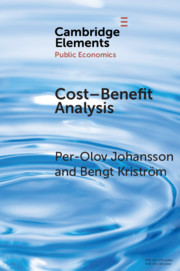Element contents
Cost–Benefit Analysis
Published online by Cambridge University Press: 24 May 2018
Summary
- Type
- Element
- Information
- Series: Elements in Public EconomicsOnline ISBN: 9781108660624Publisher: Cambridge University PressPrint publication: 24 May 2018
References
References
Acknowledgements
We are grateful to the editors of the Cambridge Elements series in Public Economics, Professors Robin Boadway, Frank Cowell, and Massimo Florio, and the Associate Editor Dr. Chiara Del Bo for their generous support. Two anonymous reviewers provided us with detailed and very constructive comments. However, any remaining errors and other flaws are our own responsibility.
- 13
- Cited by



